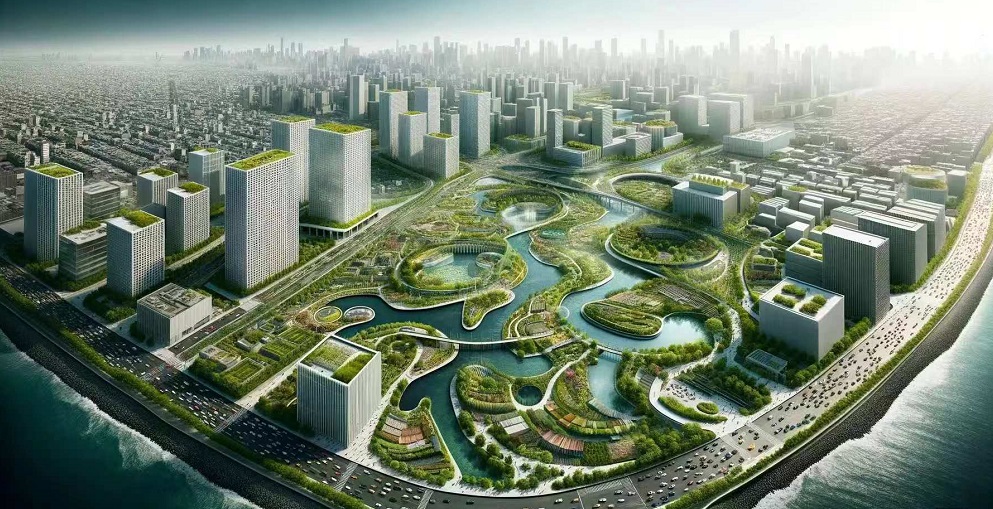Exploring Sponge Cities: A Blueprint for Sustainable Urban Water Management
Published on: 2024-07-24 Views: 647
In the face of increasingly frequent extreme weather events, such as heavy rainfall and droughts, cities worldwide are seeking innovative solutions to manage their water resources more effectively. At the forefront of these efforts stands the concept of Sponge Cities – a revolutionary approach to urban planning and infrastructure design that mimics nature's ability to absorb, store, infiltrate, purify, and release water.

What is a Sponge City?
A Sponge City is an urban area designed to mimic the natural hydrological cycle, enhancing its ability to adapt to rainfall patterns and mitigate the impacts of flooding. It integrates green infrastructure, such as rain gardens, green roofs, permeable pavements, and bioretention ponds, into the city's fabric, allowing it to 'soak up' rainwater like a sponge during heavy storms and gradually release it back into the environment or groundwater system.
Why Sponge Cities Matter
Flood Control: By enhancing the city's capacity to absorb and store rainwater, Sponge Cities significantly reduce the risk of flooding. This not only protects residents and property but also minimizes disruptions to daily life and economic activities.
Water Quality Improvement: Green infrastructure acts as a natural filter, removing pollutants and sediments from rainwater before it enters water bodies. This helps maintain the health of rivers, lakes, and aquifers, promoting biodiversity and ensuring clean water sources for future generations.
Water Conservation: By capturing and storing rainwater, Sponge Cities reduce the demand on traditional water supply systems during dry periods. This promotes water conservation and enhances the city's resilience to droughts.
Urban Cooling: Green spaces and permeable surfaces reduce heat island effects by providing shade, evaporative cooling, and reducing the amount of impervious surfaces that absorb and radiate heat. This creates a more pleasant urban environment and mitigates the impacts of climate change.
Enhanced Livability: Incorporating green infrastructure into cities creates attractive public spaces that encourage physical activity, improve air quality, and boost mental wellbeing. Residents benefit from increased access to nature and the many health and social benefits it brings.
How to Build a Sponge City
C Comprehensive Planning: Developing a comprehensive Sponge City plan that integrates green infrastructure into all aspects of urban planning, from land use to transportation and water management.
Innovative Design: Employing creative design strategies, such as using green roofs to capture rainwater and convert it into irrigation for nearby plants, or installing permeable pavements that allow water to infiltrate into the soil.
Collaboration: Fostering partnerships between government agencies, private sectors, and communities to ensure a coordinated and holistic approach to Sponge City development.
Public Engagement: Educating residents about the benefits of Sponge Cities and involving them in the planning and implementation process, fostering a sense of ownership and responsibility for water management.
Monitoring and Evaluation: Implementing robust monitoring and evaluation systems to track the effectiveness of Sponge City initiatives and make data-driven decisions for continuous improvement.
Sponge Cities represent a paradigm shift in urban water management, prioritizing sustainability, resilience, and harmony with nature. By embracing this innovative approach, cities can not only mitigate the impacts of climate change but also create healthier, more livable, and economically vibrant communities for all. As we continue to navigate the challenges of the 21st century, Sponge Cities offer a promising path forward towards a more sustainable future.
